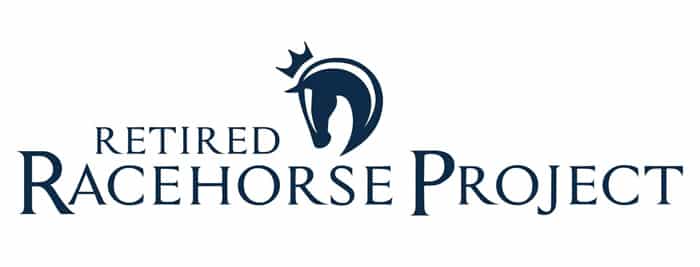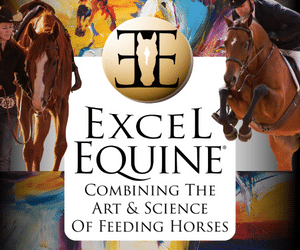Thoroughbred blood has long been utilized to refine Warmblood breeding for English-based disciplines, adding athleticism, speed and elegance to European breeds that might have otherwise reverted to their draft horse origins. Indeed, within the sport of eventing, participants discuss breeding with emphasis on horses’ percentage of “blood” — Thoroughbred blood, with higher percentages of Thoroughbred heritage most desirable for the stamina needed to gallop cross-country.
But the Thoroughbred’s influence on performance horse breeding does not stop with the English disciplines. While the American Quarter Horse is considered the defining breed of Western sport and riding, from working ranch animals and cutters to cow horses and barrel racers, the breed is firmly rooted in Thoroughbred heritage — and some intrepid breeders are returning to those roots to enhance their programs, bringing fresh blood to the Quarter Horse breed by echoing history.
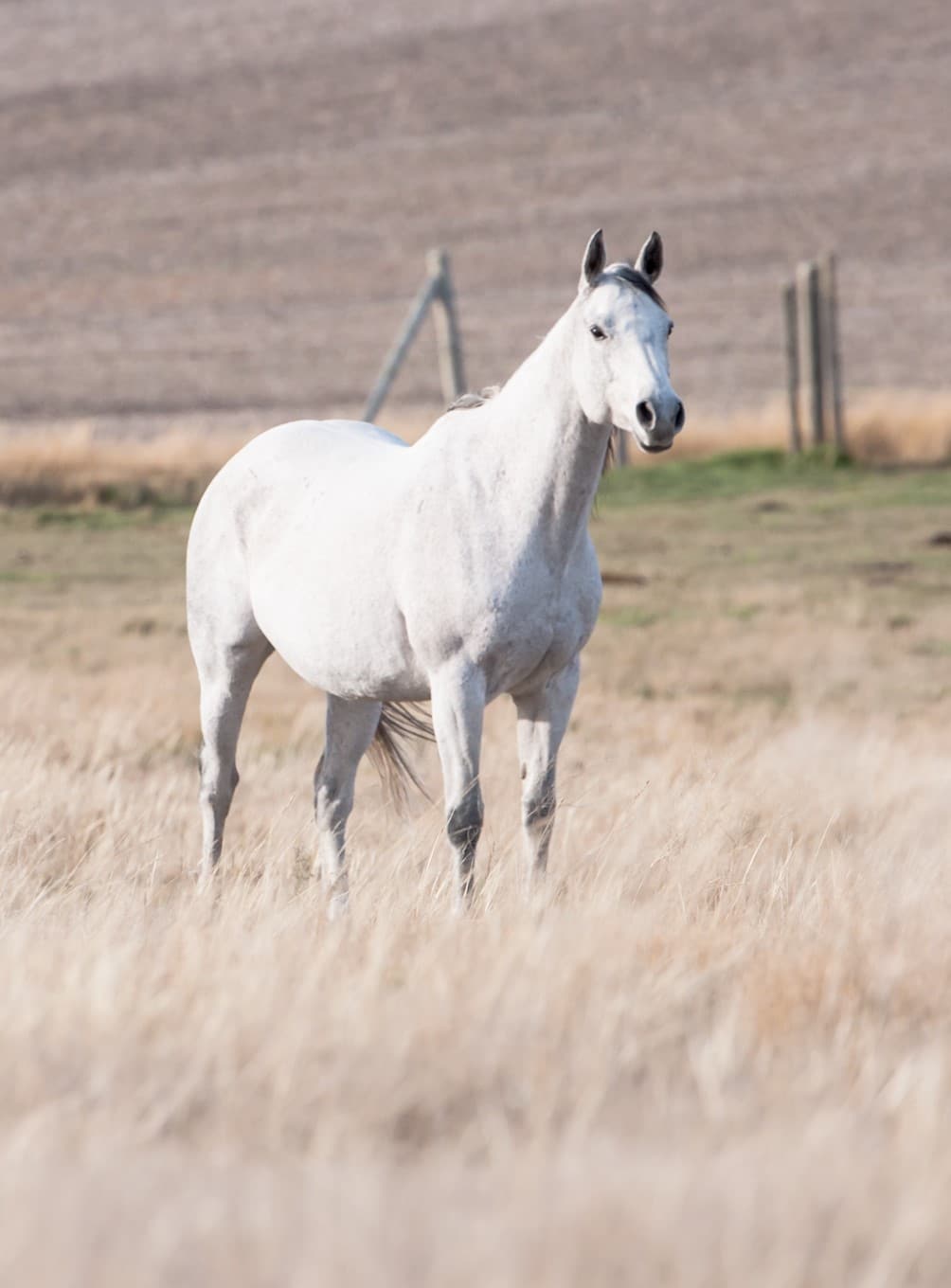
Ryan Fleetwood credits Rugged Ashley, a 75% Thoroughbred mare that’s registered Appendix, with bringing “tremendous genetics” to his breeding program. Photo courtesy Ryan Fleetwood
The Rise of the Quarter Horse & the Appendix
On its website the American Quarter Horse Association says the breed has its origins in America’s Colonial days, when colonists began crossing their English working horses with quick-footed horses owned by Native Americans that descended from the Spanish Barb. Colonists often raced these horses in short sprints, calling them the “Celebrated American Quarter Running Horse,” a moniker that would eventually morph into the breed’s modern-day name.
In the mid-18th century, English Thoroughbreds were imported to the Colonies, including a grandson of the Godolphin Arabian named Janus that proved to be particularly influential in the breeding of these short-distance sprinters. As the American Thoroughbred rose in prominence after the American Revolution, with the development of long-course racetracks and breeding programs, the sprinter-type forebears of the Quarter Horse moved west with the pioneers.
In the early 1800s another Thoroughbred stallion, Sir Archy, left his mark on the foundations of the Quarter Horse breed, with many sons and daughters going on to produce horses any Western aficionado will recognize: Copper Bottom (a direct son) and descendants Steel Dust and Shiloh, recognized as direct Quarter Horse foundation sires.
These “short horses,” bred to be powerful sprinters as well as working animals on farms and ranches, were not formally recognized as a distinct breed until 1940, when a group of breeders and owners came together to form the American Quarter Horse Association (AQHA) and maintain a registry. However, friction between the “bulldog” breeders, who emphasized conformation and a stout, stocky “type” for the new breed, and the racing breeders, who emphasized performance on the sprint track with the continued infusion of Thoroughbred blood, marred the association’s early years and even led to the formation of rival organizations.
The organizations merged in 1949, with horses formerly registered to the rivaling American Quarter Racing and National Quarter Horse Breeders groups now listed in the AQHA’s Appendix registry. Quarter Horse/Thoroughbred crosses were also included in the Appendix registry, and it took a complicated process involving conformation and offspring inspections to move an Appendix horse to the permanent registry. After more than a decade of debate and compromise, the AQHA established the new rules governing the Appendix registry that still hold true today: After Jan. 1, 1962, all foals with an AQHA-registered sire and dam would automatically be eligible for a registration number without inspection, and the Appendix registry would be reserved for offspring with a registered Quarter Horse parent and a Jockey-Club-registered Thoroughbred parent. Appendix horses can move into the “full” AQHA registry by attaining a Register of Merit (earned through competition) and passing inspection for conformation after age 2.
The AQHA could not deny the influence and impact of Thoroughbreds throughout the breed’s history — not only in the formative years of the Colonial sprinter but also throughout the rise of the Quarter Horse as a recognized breed. Several Thoroughbreds have been inducted into the AQHA Hall of Fame for their influence and ability, including breed-shaping stallions Three Bars, Azure Te and Beduino, as well as Thoroughbreds that bested Quarter Horses at their own game, outsprinting the fastest of the breed.
In modern Quarter Horse breeding, direct Thoroughbred blood remains influential both in racing and the show ring. On the Western performance side, however, where breeding has become highly specialized, finding Thoroughbred influence in immediate pedigrees is less common — though more breeders are realizing the value of a Thoroughbred outcross.
Breeding the Ultimate Working Horse
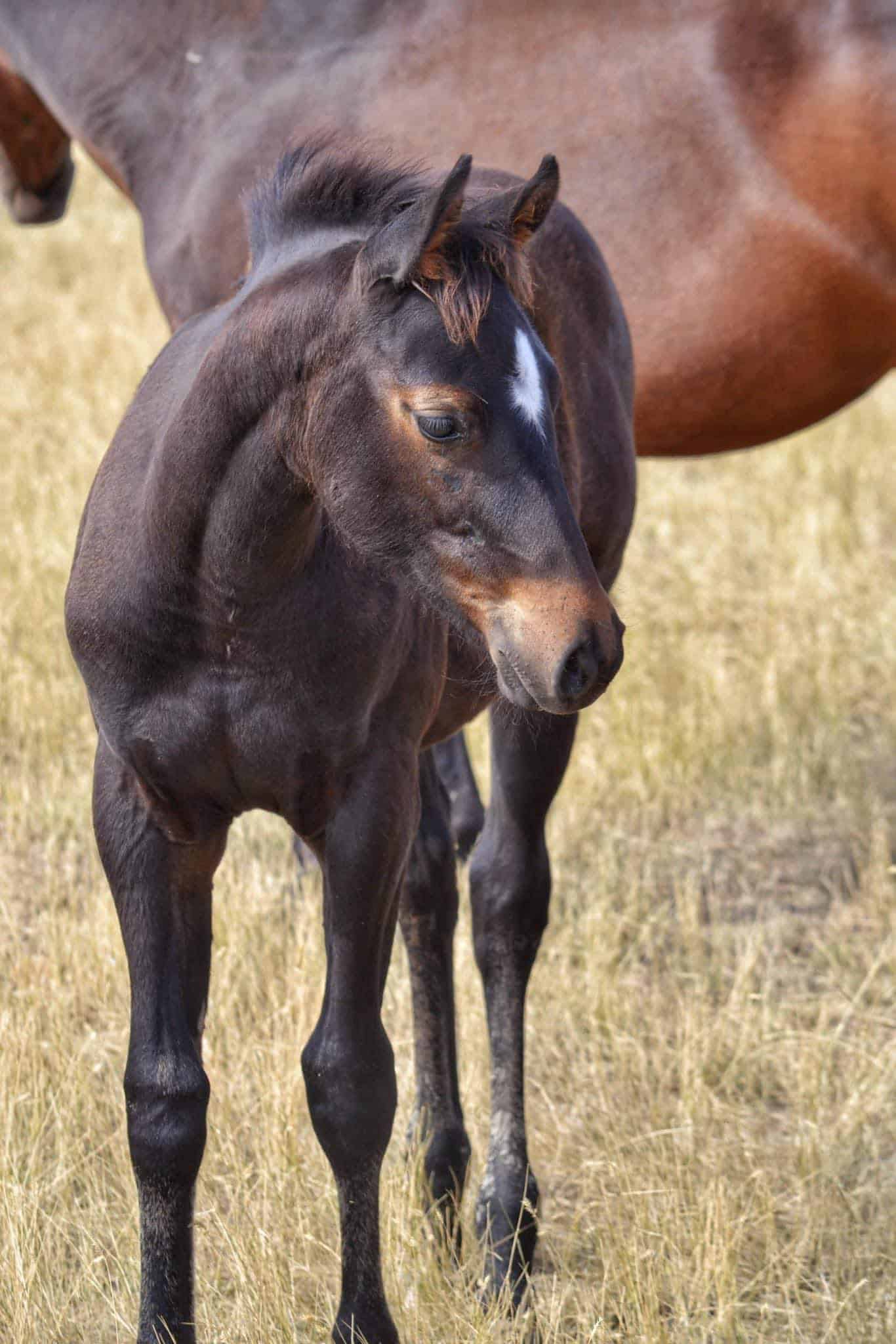
Shoot Em All Down is a 2022 Appendix filly by Fed Biz that Fleetwood describes as “a showstopper.” Photo courtesy Ryan Fleetwood
One of those breeders is AQHA director and professional horseman Ryan Fleetwood, of Fleetwood Farms, in Champion, Alberta. Named the Canadian Remuda of the Year in 2021 by the Canadian Quarter Horse Association (a national affiliate of the AQHA), Fleetwood Farms has been in the breeding industry for four generations.
Fleetwood sees a vision of the perfect Quarter Horse in his mind’s eye. He describes a horse with a clean throatlatch, a neck that ties in well, shoulders that aren’t as wide as the hind end — which allows a horse to get over and around himself — a strong wither and a free-moving stride with good reach through the shoulder.
“One of the things we’re looking for is athleticism, and the root of athleticism is speed,” he says. “No matter if we’re roping, reining, cutting or working our horses outside of the ring, so many characteristics go back to a horse doing something when it’s asked, quickly.”
To achieve these qualities Fleetwood has begun looking outside the Quarter Horse breed, seeking to add them through the careful selection of Thoroughbreds — both on the top and bottom of a pedigree. He stood the Thoroughbred stallion Big Black Storm for several seasons, crossing him on his typiest Quarter Horse mares to combine the best qualities of both breeds. He also rotates Thoroughbred mares into his breeding program to cross on his Quarter Horse stallions.
Fleetwood points to a 2022 filly he bred by Fed Biz (a son of Giant’s Causeway that relocated to Alberta’s Highfield Farm in 2021), out of a mare with well-known Quarter Horse stallions Playgun and Grays Starlight in her pedigree. “She is absolutely tremendous,” he says. “She is exactly what we were hoping for with characteristics of both parents. She’s just beautiful — a showstopper.
“I don’t know that the first-generation 50% Thoroughbred Appendix is necessarily what I’m after,” Fleetwood adds. “But in the process of developing a program, the offspring of that first generation will bring in the stronger wither, more speed, more height, more reach in the stride and pass that on to consequent generations from there — always remembering that speed is athleticism.”
While the feedback from his peers is a 50-50 split — “some people think I’m crazy, and others say ‘Oh, what a great idea,’ ” he notes — Fleetwood knows he’s on the right track. “I harken back to the old days of Quarter Horse versatility and what made this breed so popular. The Thoroughbred blood is doing what I wanted it to do for the same reasons we wanted it in the past — to refine the horses we have and keep us moving forward.”
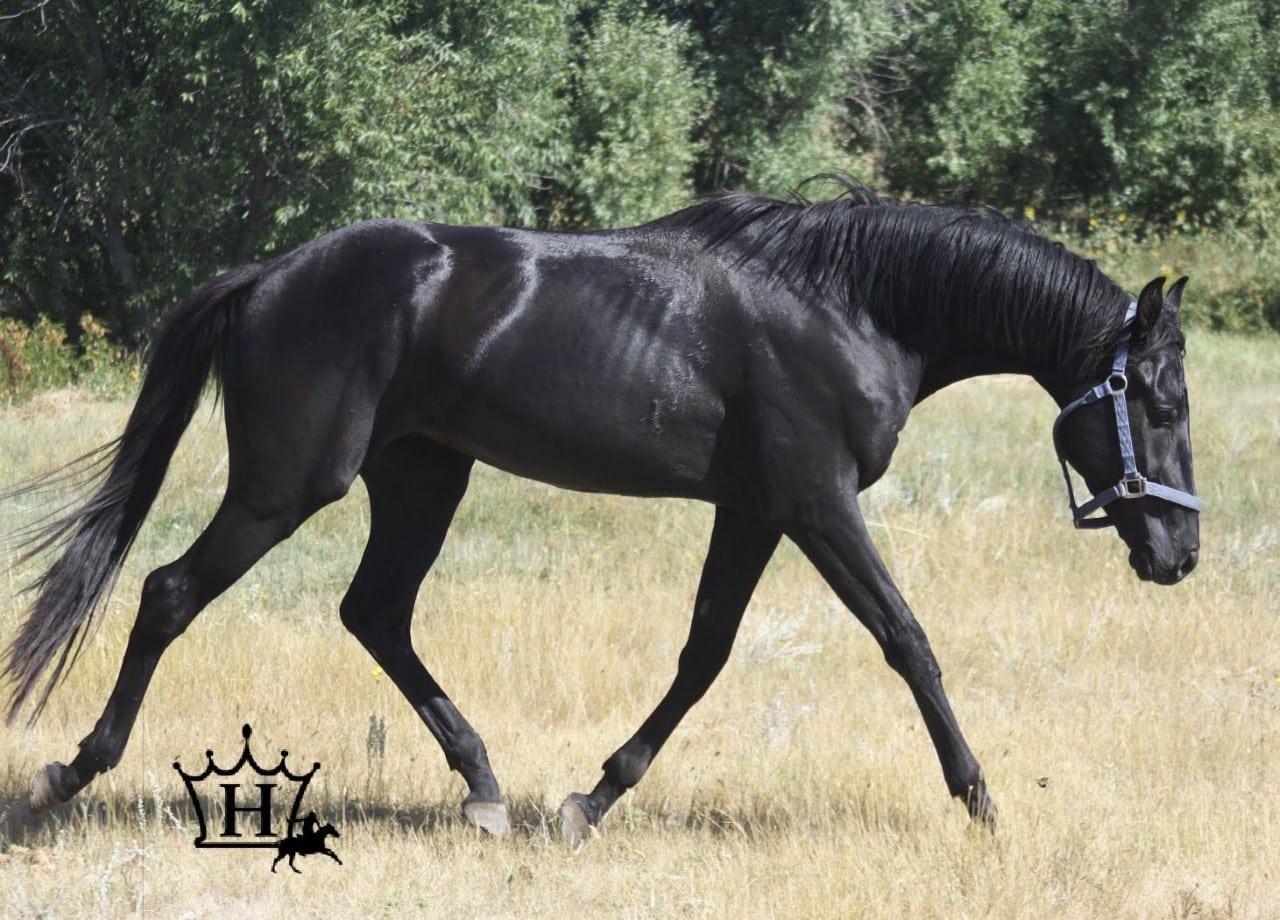
Sired by the family’s late Thoroughbred stallion Small Change, the Appendix Paint stallion Change My Mojo is now standing at Hess Performance Horses in their polo breeding program. Photo courtesy Jean Marie Hess
In the United States, Hess Thoroughbreds and Performance Horses, in Cheyenne, Wyoming, approached Appendix breeding from another direction. A longtime breeder of Thoroughbreds as polo ponies, which in Wyoming often double as ranch horses, the Hess family has begun breeding Appendix Quarter Horses to follow trends in the polo industry. Jean Marie Hess, representing the third generation to continue the family breeding legacy, notes that the Appendix horses are a little quieter and slower than their full-blood Thoroughbreds.
“We breed them for polo but, like most of our clients, we’re ranch-based,” says Hess. “So the majority of our horses, from our stock mares to all of our Thoroughbreds, rope and work cattle.” Having started the Appendix branch of its program about 15 years ago, the family has found better success crossing stock-breed mares (Quarter Horses and Paints) on Thoroughbred stallions, rather than breeding Thoroughbreds mares to stock stallions. “We tend to get better characteristics that way.”
Those characteristics include conformation traits like short backs and cannon bones, a deep heart girth and beautiful heads, with compact builds. The Hess family also wants to see speed, stamina and general handiness. “The stock mares have brought in a little more bone,” Hess says.
The Hess family stands three stallions, all by their foundation stallion Small Change, himself a grandson of Northern Dancer. “That Northern Dancer line really hit it for us,” Hess says. Two of the sons are full Thoroughbred, and the third is an Appendix Paint. The program’s Quarter Horse mares tend to come from old racing stock lines, which, again, already include a lot of Thoroughbred blood. “Our Appendix combination is more like 75% Thoroughbred, 25% stock,” she says.
Hess horses have done a little of everything, from polo and ranch work to running flags at Cheyenne Frontier Days, one of the most famous rodeos in the world. While many of the program’s offspring are sold to polo homes, some horses that aren’t well-suited to polo have sold into other disciplines — a testament to the horses’ versatility.
“Implementing Appendix breeding into our program is only helping both breeds,” Hess says. “The whole point of breeding is to better the breed, and we’re breeding better horses. Breeding my Thoroughbred lines onto stock horses shows what Thoroughbred blood can do to improve other breeds, and seeing how those stock breeds cross on the Thoroughbreds is helping to open up the stock horse gene pool.”
New Blood for Barrel Racing
While Rachel Primm didn’t come from a “horse people” kind of family, her perseverance in barrel racing, including two wins at the National High School Finals Rodeo and a college rodeo career with California Polytechnic State University, brought the AQHA mare Dashin Julene into her life. When a breeding deal with the mare’s previous owner fell through after embryos had already been flushed, Primm found herself with the opportunity to get into breeding, and her father, Roger, came on board in support.
“We didn’t necessarily intend to become breeders,” Primm says. “But then our first foal came along, and we were in love.” While Dashin Julene had been primarily bred to other Quarter Horses, it had always been in Roger’s mind to breed the mare to a Thoroughbred if the right horse came along — and his friend Mike Pegram happened to co-own the perfect stallion, Coil (Point Given — Eversmile, Theatrical [IRE]).
Trained by Bob Baffert, who himself came up the ranks of Quarter Horse sprint racing, Coil was a multiple graded stakes winner Baffert described as one of his favorites and a horse that would cross well on Quarter Horse mares. “Bob said he was one of the best-minded horses, a big goofball in the barn,” Primm says. “Dashin Julene is quick-footed and very snappy, the perfect horse to cross with the size and stride of a Thoroughbred.”
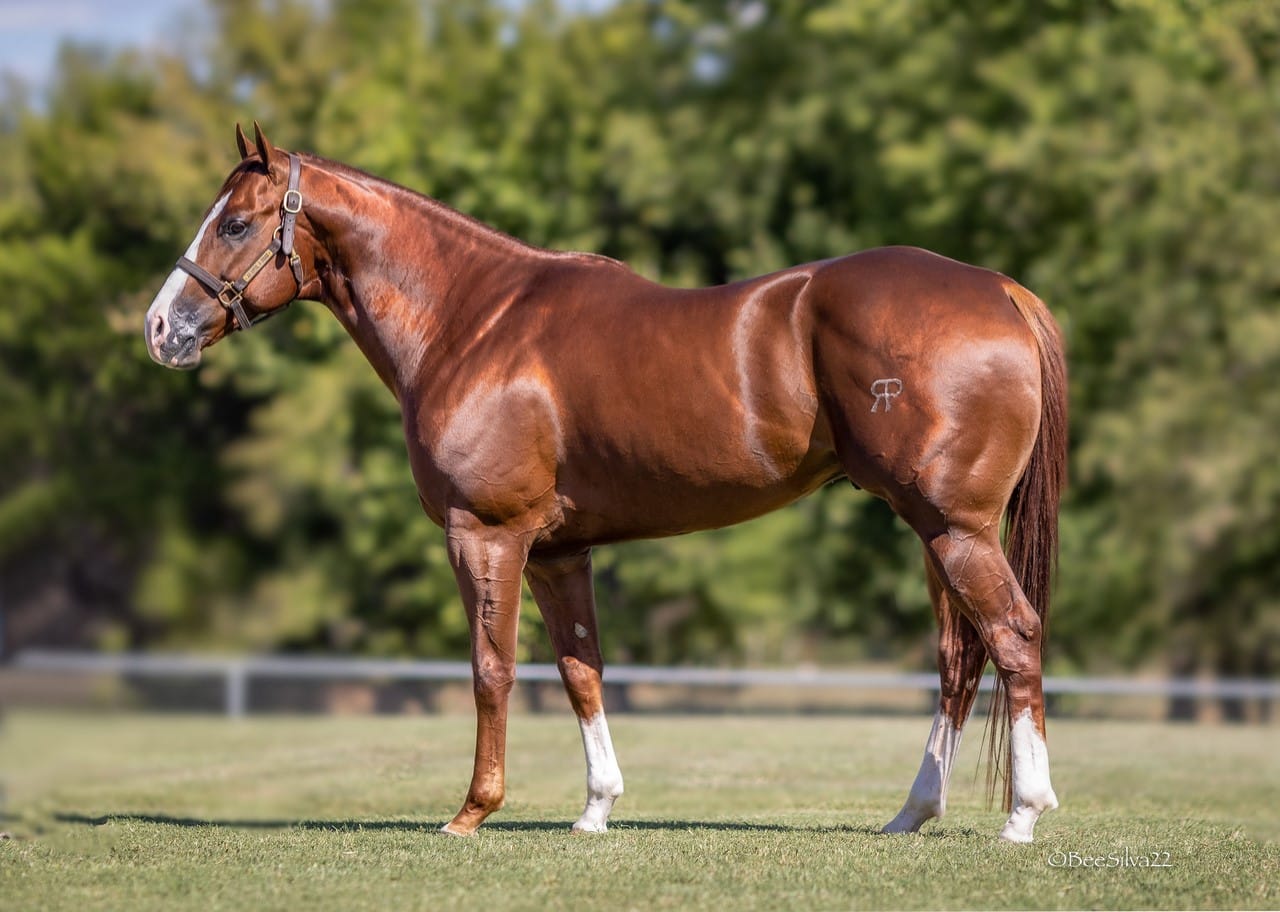
Rachel Primm bred RP Recoil and Strike out of her Quarter Horse mare by Thoroughbred stallion Coil and stands and markets him as a stallion for the sport of barrel racing. Photos courtesy Rachel Primm
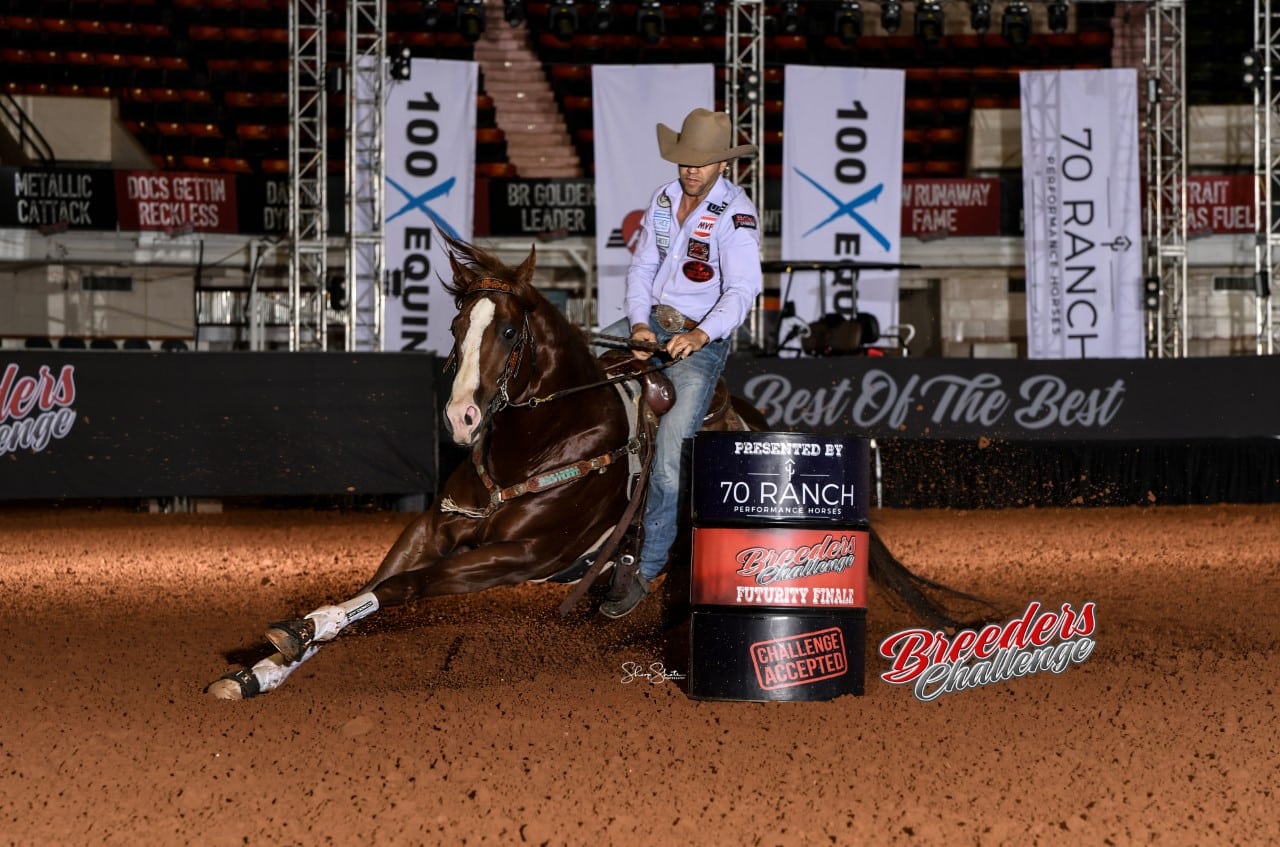
The resulting foal, blending the best qualities of sire and dam, was RP Recoil N Strike. “He has all the traits we wanted,” Primm says. “He has huge bone, a huge stride, with the hip of a Quarter Horse and the ability to drag his butt around a barrel like the best of them. He’s the soundest horse I’ve ever had, and he walks out of the ring after a run not even breathing hard.”
Realizing they had something special on their hands, the Primms, based in Gainesville, Texas, kept “Striker” intact — and, looking back, Primm realizes what an auspicious move it was to breed an Appendix horse for the sport of barrel racing. In recent years a number of lucrative incentive programs have been developed for barrel horse breeders, which has led to the development of true barrel horse bloodlines — the previous industry model was to work with horses bred either for sprint racing or for working cattle. The flip side of this development, however, is a narrowing of the gene pool, as breeders return to incentive-nominated stallions.
While Primm describes the process of standing and marketing a stallion as expensive and time-consuming, not to mention what she invests nominating Striker for the various barrel racing incentive programs, she believes in what she’s doing. “All Quarter Horses originally came from Thoroughbreds,” she says. “We’re breeding out all those original good lines, and no one realizes the great traits that Thoroughbreds can bring back. We’re really not actually doing anything new — it’s the old way, we’re just bringing it back again.”
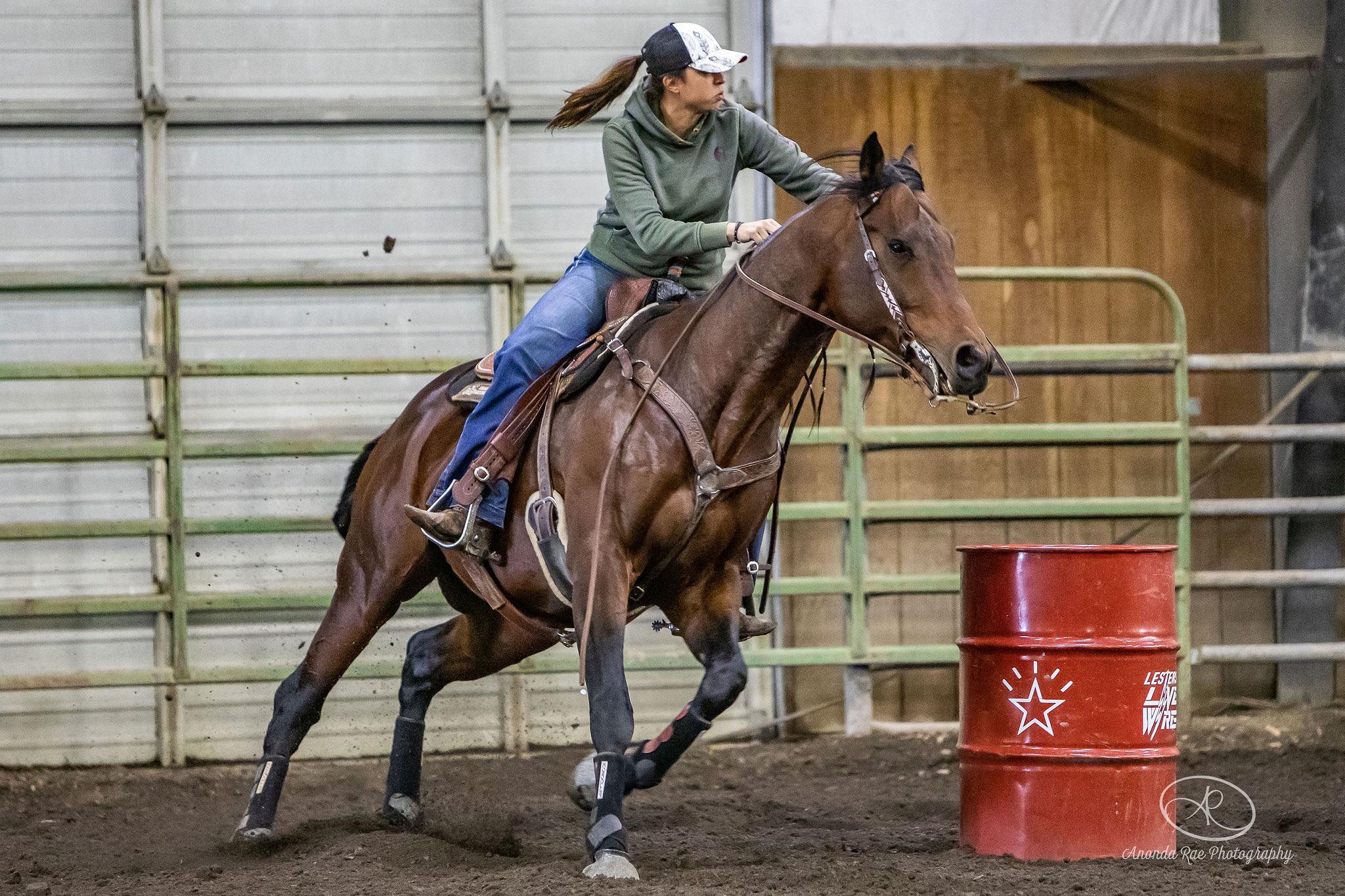
Hannah Long stood the late Kool Kingdom, by Animal Kingdom, to bring fresh bloodlines into the barrel racing industry. Photo courtesy Hannah Long
Hannah Long, of Southern Oregon, went directly to the Thoroughbred source when it came to breeding barrel horses. She acquired the unraced but race-trained Kool Kingdom (Animal Kingdom) from his racing connections in mid-2020. Long had grown up believing most of the Thoroughbred stereotypes: They were hot, spooky, flighty and ill-suited to Western sports. But recent prospects she had worked with had changed her mind. Acquiring Kool Kingdom, whom she calls “Thor,” gave her the ultimate opportunity to show what the Thoroughbred breed could do.
“He’s such a laid-back horse, but when he turns it on he has a lot of power,” says Long, who trained Thor both in barrel racing and dressage. “His mind is wonderful.”
She knew she had the right horse to compete in barrel racing and also bring fresh bloodlines into the industry.
Thor’s first foals are yearlings, including three Appendix horses, a Paint Appendix, an Appaloosa Appendix and a Warmblood cross, and Long likes what she sees. “They have phenomenal minds,” she says. “They’re floaty movers, and they’re all pretty tall. They’ve got lots of substance and great hips, tons of muscling — they look like they could go in any direction.” Like their sire, they’re powerful but not hot.
“I really want to give Thoroughbreds a fighting change in this industry,” Long adds. “If I can figure out the right mares and crosses, we can really change the outlook on this breed.”
Author’s note: Shortly after the writing of this article, Kool Kingdom suffered a paddock accident and was euthanized.

